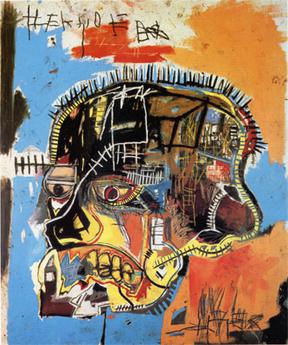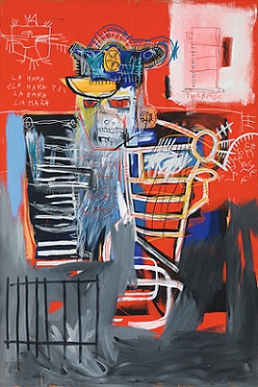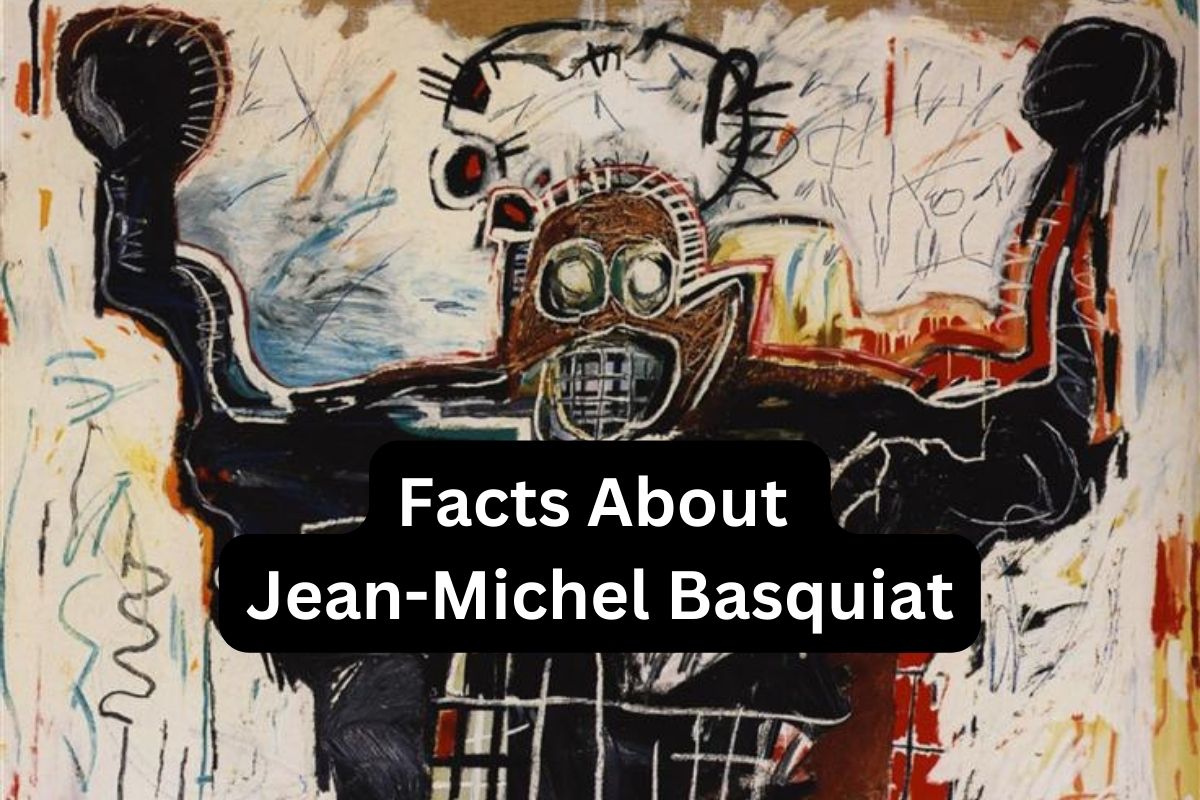Jean Michel Basquiat was an American artist who rose to fame in the 1980s for his unique, raw, and expressive style of painting.
Born in Brooklyn, New York in 1960 to a Haitian father and Puerto Rican mother, Basquiat began his artistic career as a graffiti artist under the pseudonym “SAMO” before transitioning to a career as a fine artist.
Basquiat’s work often dealt with themes of race, identity, and social inequality, and he was heavily influenced by jazz music and the works of other artists, including Pablo Picasso and Jean Dubuffet.
Despite his relatively short career, Basquiat’s impact on the art world continues to be felt today, and his work is highly sought after by collectors around the world.
Jean-Michel Basquiat Facts
1. Jean Michel Basquiat was an American artist of Haitian and Puerto Rican descent
Jean Michel Basquiat was an American artist of Haitian and Puerto Rican descent, born on December 22, 1960, in Brooklyn, New York.
Basquiat was born and raised in Brooklyn, New York City. He was the second of four children born to Matilde Andrades, who was Puerto Rican, and Gerard Basquiat, who was Haitian.

Basquiat grew up in a multicultural household and was exposed to a wide range of cultural influences. He showed an early interest in art, and his mother encouraged his creativity by giving him art supplies and taking him to museums.
2. Basquiat began as a graffiti artist under the name “SAMO” in the late 1970s
As a teenager, Basquiat began creating graffiti art in the streets of New York City under the pseudonym “SAMO.”
He worked alongside another artist named Al Diaz, and the two became known for their cryptic messages and drawings that appeared throughout the city.
The SAMO tag was a commentary on consumerism and the art world, and it gained a following among young artists and musicians in New York City.
3. Basquiat’s parents were immigrants to the United States
Both of Basquiat’s parents were immigrants to the United States. His mother, Matilde Andrades, was born in Puerto Rico and moved to New York City as a young woman.
His father, Gerard Basquiat, was born in Haiti and emigrated to the United States in the 1940s. Both of Basquiat’s parents were interested in art, and they encouraged their son’s creative pursuits from an early age.
4. Basquiat dropped out of high school at age 17
Basquiat struggled with the traditional education system and dropped out of high school in his senior year. He briefly attended a trade school but left after a few months to focus on his art.

He lived homeless for a time, sleeping in abandoned buildings and on park benches. He supported himself by selling postcards and t-shirts featuring his artwork on the streets of New York City.
5. Basquiat’s art is characterized by its rough, raw, and spontaneous style
Basquiat’s art is known for its unique style, which combines elements of street art, graffiti, and fine art. His works often feature bold colors, rough brushwork, and fragmented imagery.
Basquiat’s art addresses a wide range of social and political issues, including race, identity, power, and inequality. His works often incorporate symbols, text, and references to popular culture, and they have been interpreted in a variety of ways by critics and scholars.
6. Basquiat’s first solo exhibition was in 1982
Basquiat’s first solo exhibition took place in 1982 at the Annina Nosei Gallery in SoHo, New York City.
The exhibition featured 16 large-scale paintings, and it was a critical and commercial success.
Basquiat’s work was praised for its energy and originality, and it attracted the attention of collectors and curators around the world.
7. Basquiat’s art was heavily influenced by jazz, blues, and bebop music
Basquiat was deeply influenced by music and often listened to jazz, blues, and bebop while he worked.

He was also inspired by the works of other artists, including Pablo Picasso, Jean Dubuffet, and Cy Twombly. He drew on these influences to create a unique style that combined elements of street art, graffiti, and fine art.
8. Basquiat collaborated with other artists
Basquiat collaborated with a number of other artists throughout his career, including Andy Warhol and Keith Haring.
He was also part of the Neo-Expressionist movement, a group of artists who emerged in the 1980s and were known for their energetic, expressive style.
Basquiat’s collaborations with Warhol were particularly influential, and they produced a series of works together that explored themes of celebrity, consumerism, and the art world.
9. Basquiat’s art is known for its use of symbols and motifs
Basquiat’s paintings often featured a variety of symbols and motifs that he used to explore themes of identity, race, and social inequality. One of his most iconic symbols was the crown, which he used to represent power and authority.
Other common motifs in his work included skulls, African masks, and graffiti-style writing.

These symbols were often combined with images of everyday objects and popular culture references to create complex, multi-layered works that invited viewers to interpret their meanings in different ways.
10. Basquiat was diagnosed with attention deficit hyperactivity disorder (ADHD) as a child
Basquiat struggled with substance abuse throughout his life, and his drug use was fueled in part by his ADHD diagnosis.
He often used drugs as a way to cope with the pressures of fame and success, and his addiction ultimately contributed to his untimely death at the age of 27.
11. Basquiat died on August 12, 1988, at the age of 27
Basquiat’s life was tragically cut short when he died of a drug overdose on August 12, 1988, at the age of 27.
His death was a shock to the art world, and it raised questions about the pressures faced by young artists and the toll that drug addiction can take on creative talent.
12. Basquiat’s work has been featured in numerous museum exhibitions
Despite his relatively short career, Basquiat’s work has been the subject of numerous museum exhibitions and retrospectives.
One of the most significant exhibitions was a major retrospective at the Whitney Museum of American Art in 1992, which showcased over 100 works by the artist and helped to cement his status as one of the most important artists of his generation.
13. Basquiat’s art has been the subject of several films
Basquiat’s life and work have been the subject of several films, including:
- “Basquiat” (1996) directed by Julian Schnabel, which starred Jeffrey Wright as the artist
- “Boom for Real: The Late Teenage Years of Jean-Michel Basquiat” (2017) directed by Sara Driver, which focused on Basquiat’s early years as a graffiti artist in New York City.
14. Basquiat’s work has been sold for record-breaking prices at auctions
Basquiat’s work has become highly sought after by collectors, and his paintings have sold for record-breaking prices at auctions around the world.
In 2017, a painting by Basquiat titled “Untitled” sold for $110.5 million at Sotheby’s in New York, making it the highest-selling work by an American artist at auction.
This sale cemented Basquiat’s status as one of the most valuable and influential artists of his generation.
15. Basquiat was a self-taught artist
Basquiat was a self-taught artist who began drawing at a young age. His mother, Matilde, recognized his talent and encouraged him to pursue his art. She took him to museums and bought him art supplies, which helped to foster his creativity and love for art.
16. Basquiat’s art was featured on the cover of The New York Times Magazine in 1985
Basquiat’s art received widespread recognition during his lifetime. In 1985, one of his works was featured on the cover of The New York Times Magazine, which helped to raise his profile in the art world.

The following year, he was named one of the 40 most influential people under the age of 40 by Time magazine, which further solidified his status as a rising star in the art world
17. Basquiat was interested in exploring his Haitian heritage through his art
Basquiat was deeply interested in his Haitian heritage, and he often incorporated elements of Haitian culture and voodoo symbolism into his art.
He was particularly fascinated by the figure of the “houngan” or voodoo priest, and he used this figure as a symbol of spiritual power and cultural identity in some of his works.
18. Basquiat’s art has been displayed in museums and galleries around the world
Basquiat’s work has been exhibited in museums and galleries around the world, including the Guggenheim Museum in Bilbao, Spain, and the Fondation Louis Vuitton in Paris, France.
His works are highly sought after by collectors, and they are considered some of the most important and influential works of contemporary art.
19. Basquiat’s estate is managed by the Basquiat Foundation
Basquiat’s legacy is managed by the Basquiat Foundation, a non-profit organization that was established in 1988 after his death.
The foundation supports arts education programs and other initiatives that promote the legacy of Basquiat’s work. It also manages the licensing of his artwork and helps to preserve his legacy for future generations.

